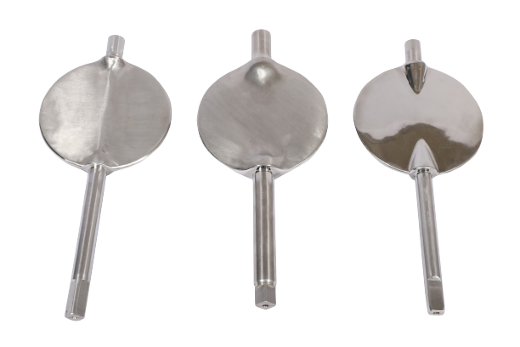Technical Capabilities
Materials
All our products comply to various standards such as ASTM, DIN, DIN, IS, etc. Our material handling capabilities include:• Plain Carbon Steel – Low, Medium and High Carbon Steel
• Low Alloy Steel (Less than 8% Alloying)
• High Alloy Steel (More than 8% Alloying)
• Corrosion / Heat / Wear Resistant Grades
Linear Tolerance
The following table serves as guideline for Linear Tolerance in Casting and Machined Casting| Dimensions (mm) | Tolerance in Cast Component (mm) | Tolerance in Machined Cast (mm) |
|---|---|---|
| Up To 25 | ± 0.74 | ± 0.1 |
| Up To 50 | ± 1.00 | ± 0.15 |
| Up To 75 | ± 1.10 | ± 0.15 |
| Up To 100 | ± 1.20 | ± 0.15 |
| Up To 150 | ± 1.40 | ± 0.2 |
| Up To 200 | ± 1.60 | ± 0.2 |
| Up To 250 | ± 1.80 | ± 0.2 |
| Up To 250 | ± 1.00% | ± 0.3 |
Flatness
Flatness deviation is a function of shrinkage occurred during solidification of wax and metal. It is directly proportional to the thickness of cross-section. Although each casting will vary individually, an approximate tolerance guide would be 0.2 mm T.I.R. (Total Indicator Reading), for each 10 mm thick section. This variation will be apparent in surfaces of length 20 mm or more.Straightness
Straightness deviation is a function of stresses developed during solidification of wax and metal. The mechanical properties of an alloy greatly affect the ability to meet the print tolerances. Generally, a constant section will be axial bow of approximately 0.2 mm per linear 20 mm under normal tolerance.Roundness & Concentricity
Out-of-round is the radial difference between a true circle and the surface diameter. The following table serves as a guideline for out-of-round Tolerance in Casting and Machined Casting:| Hole Diameter (mm) | Tolerance in Cast Component (mm) | Tolerance in Machined Cast (mm) |
|---|---|---|
| Up To 10 | ± 0.1 | ± 0.05 |
| Up To 25 | ± 0.2 | ± 0.1 |
| Up To 50 | ± 0.3 | ± 0.15 |
Angularity
Angular tolerance on investment castings should not be less than + 1°.Parallelism and Perpendicularity
Parallelism and Perpendicularity are both relative planar measure with respect to a datum plane. They are affected by casting configuration and straightness. Tolerances less than 0.2 mm T.I.R. (Total Indicator Reading), may require secondary machiningSurface Finish
| Manufacturing Process | Surface Finish Values (Ra) |
|---|---|
| Casting | 3.2 to 6.0 |
| Machining | 1.2 to 1.6 |
| Polishing | 0.6 to 0.8 |
| Buffing | 0.2 to 0.4 |
Storage Conditions
Materials are stored in a dry place to avoid moisture. Material shall not be exposed to heat before inspection. Material shall be stabilized for 24 hrs at 23°C (±2°C) before inspection.Polishing & Finishing
Customised as per requirements and specifications.
Quality Assurance
• ISO 9001 : 2015 Certificate• ISO 14001 : 2015 Certificate
• BS 18001 : 2007
• AD 2000 – Merkblatt W0 Certificate
• PED 2014/68/EU Certificate
For more certifications and approvals please contact DuFlon Sales
Inspection and Testing Facilities
• All wax patterns inspected prior to issue• Frequent Slurry Testing
• Batch Heat Testing as per International Standard
• Atomic Emission Spectrometer testing done twice – before and after alloying
• Computerised Universal Testing Machine
• Computerised Brinnel Hardness Testing Machine
• IZOD / Charpy Impact Testing Machine
• Fully Equipped Dimensional Inspection Facility
